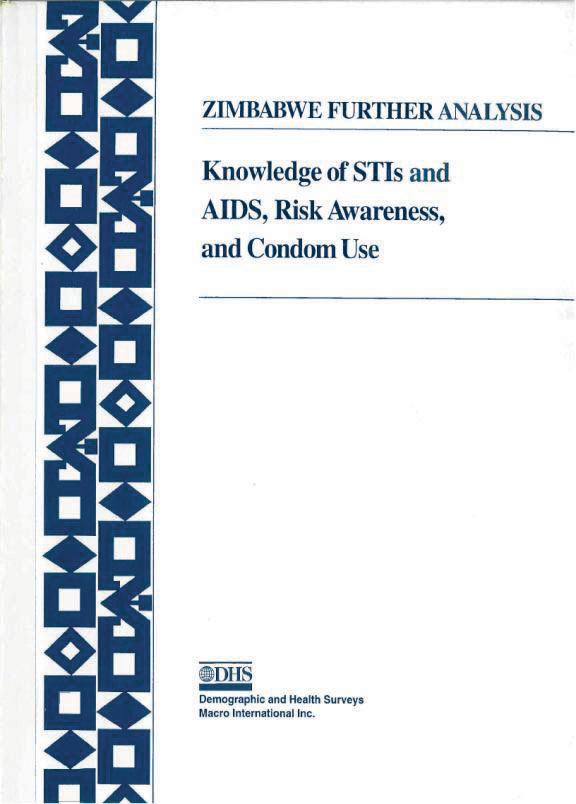- PUBLICATIONS
- JOURNAL ARTICLES
- ORDER PUBLICATIONS
Publications Summary
- Document Type
- Further Analysis
- Publication Topic(s)
- HIV/AIDS
- Country(s)
- Zimbabwe
- Survey
- Zimbabwe DHS, 1994
- Language
- English
- Recommended Citation
- Mbizvo, Michael T., Seter Siziya, Jide Olayinka, and Susan E. Adamchak. 1997. Knowledge of STIs and AIDS, Risk Awareness, and Condom Use in Zimbabwe. DHS Further Analysis Reports No. 22. Calverton, Maryland, USA: Macro International
- Download Citation
- RIS format / Text format / Endnote format
- Publication Date
- October 1997
- Publication ID
- FA22
Download
 Knowledge of STIs and AIDS, Risk Awareness and Condom Use in Zimbabwe (PDF, 2390K)
Knowledge of STIs and AIDS, Risk Awareness and Condom Use in Zimbabwe (PDF, 2390K)
Download this publication
There is no printed copy available to order.
